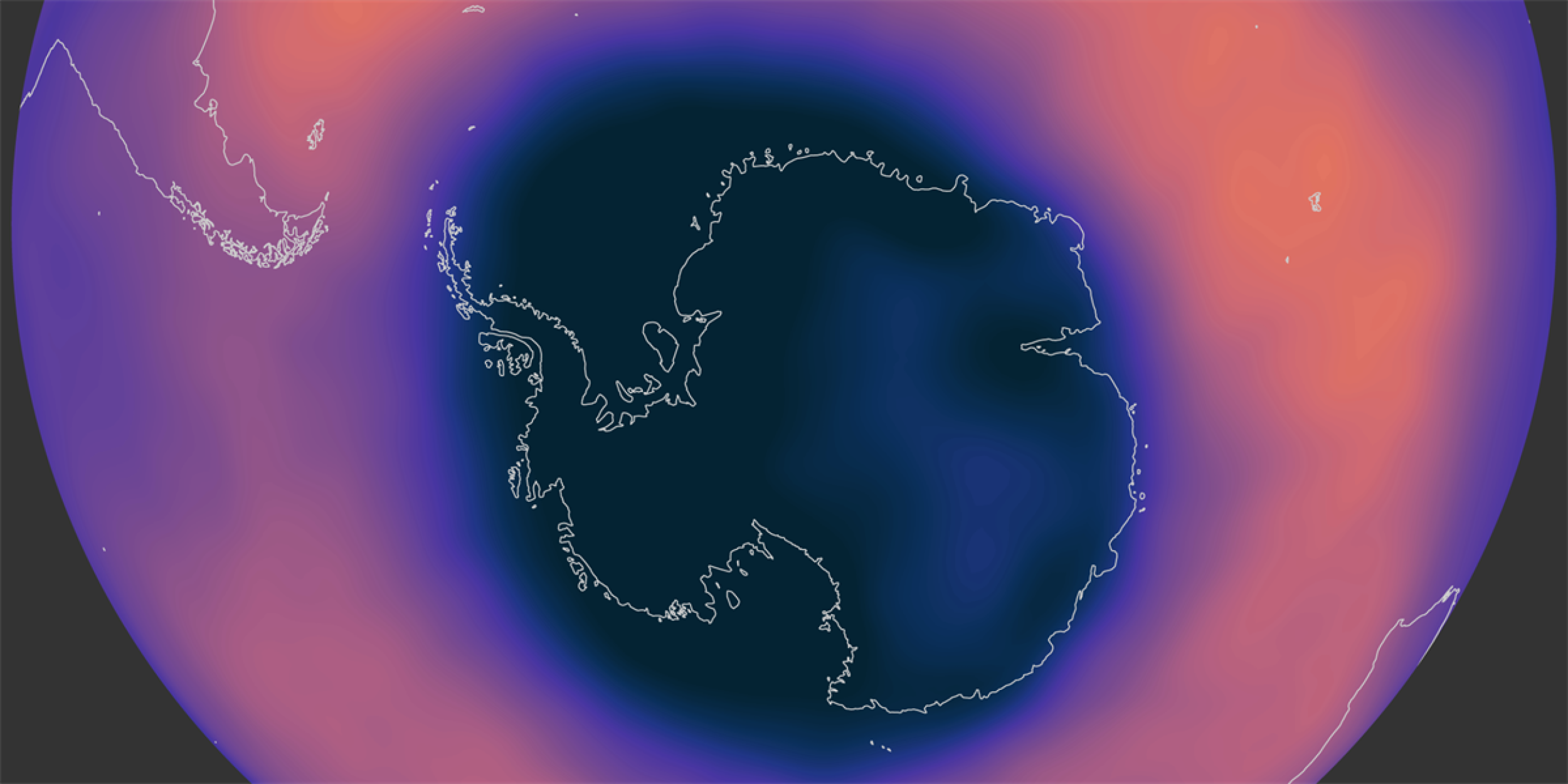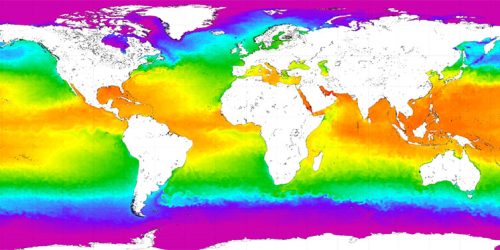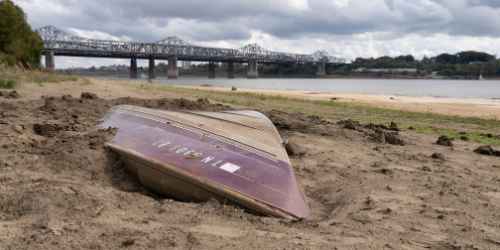Discovery in 2018 posed first real test of the Montreal Protocol
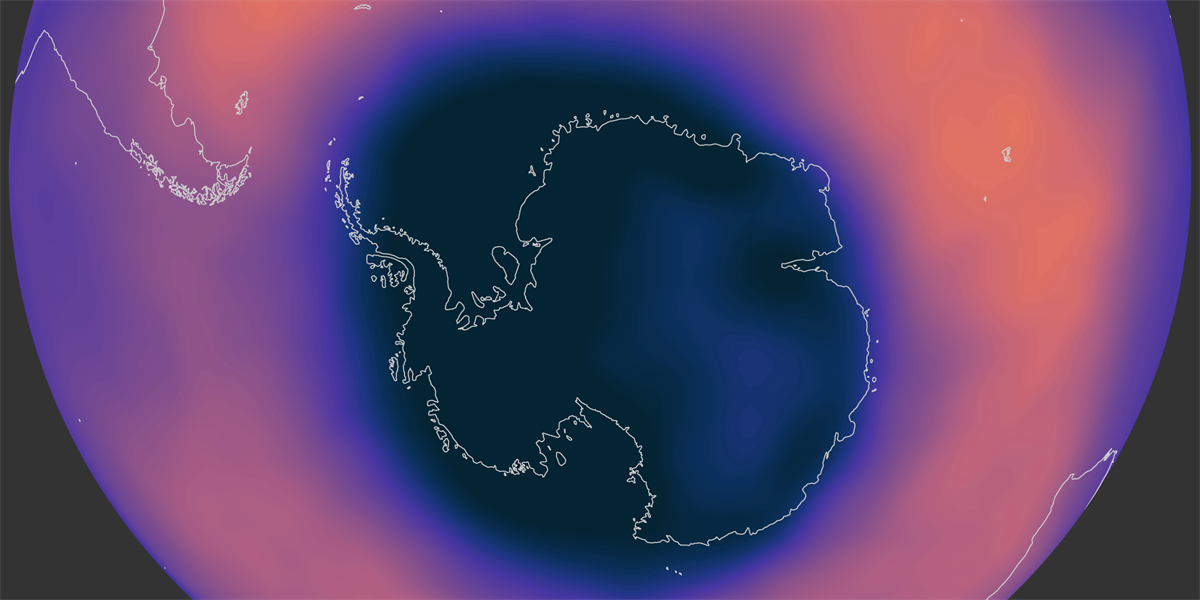

Emissions of a banned ozone-depleting gas are back on the decline. The image shoes Southern Hemisphere ozone concentration September 14-20, 2020. Credit: NOAA climate.gov
New analyses of global air measurements, funded in part by CPO’s Atmospheric Chemistry, Carbon Cycle, and Climate (AC4) program, show that five years after an unexpected spike in emissions of the banned ozone-depleting chemical chlorofluorocarbon CFC-11, they dropped sharply between 2018 and 2019.
The abrupt turnaround was detected by both NOAA’s global monitoring network and an independent global sampling network, the Advanced Global Atmospheric Gases Experiment (AGAGE), funded in part by NASA. Results showing a global emission decrease in CFC-11, by a team of scientists from the U.S., United Kingdom and Australia, as well as a companion regional analysis by a second international team showing a decline in emissions from eastern Asia, were published today in the journal Nature.
The twin papers indicate that efforts to address the first known substantive violation of the international treaty tasked with ensuring stratospheric ozone layer recovery, known as the Montreal Protocol, are working.
“This was a major test of the Montreal Protocol, and it appears to have passed,” said NOAA scientist Stephen Montzka, who led the research team that first documented the problem in 2018.
Following that initial discovery, members of the treaty called for immediate action. China then announced renewed enforcement and inspections measures. Scientists began looking for results.
“It wasn’t long before the NOAA and AGAGE data were indicating a drop in emissions both globally and from eastern China,” Montzka said. “This is a great example of how important early warnings from observational systems can be. It’s pretty hard to solve a problem you don’t know exists.”
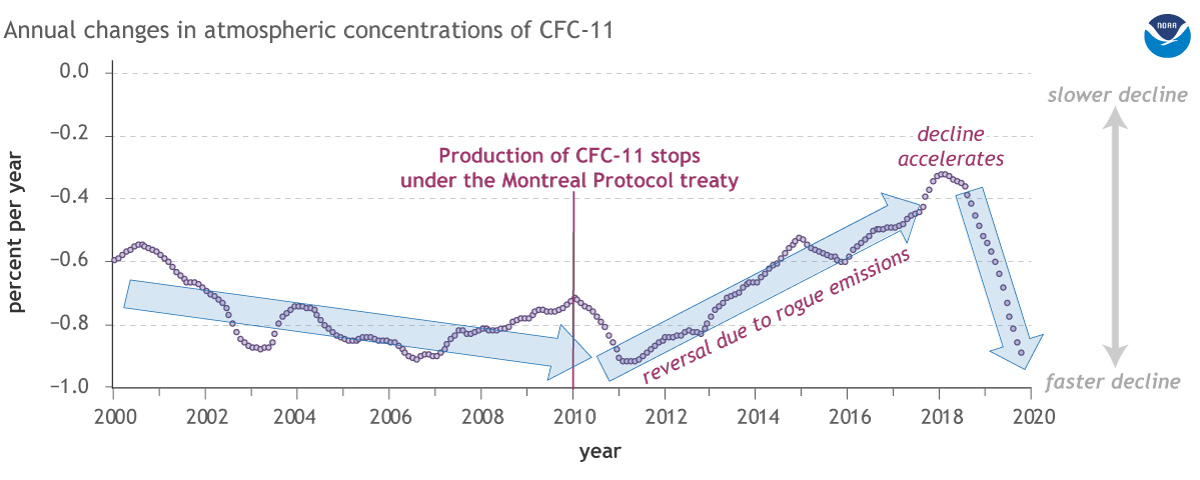

This graph depicts the annual changes in the atmospheric concentrations of CFC-11 obtained from analysis of samples from NOAA’s monitoring network from 2000 to 2020. This period includes the internationally agreed-upon ban on new CFC-11 production in 2010, the subsequent discovery of new emissions in apparent violation of the ban, and the sharp decline identified in the last two years. Source: NOAA Global Monitoring Laboratory and Climate.gov
CFC-11 is the second-most significant member of a family of chemicals known to deplete Earth’s protective ozone layer. Once widely used in the manufacture of aerosol sprays, as blowing agents for foams and packing materials, as solvents, and in refrigeration, its production was banned in 2010, although CFC-11 continues to leak from foam building insulation and appliances manufactured before that year. While the amount of CFC-11 in the atmosphere is only a few hundred parts per trillion, it plays a primary role in the formation of the ozone hole over Antarctica each September, and year-round depletion of the stratospheric ozone layer in the mid-latitudes. Ozone depletion causes thinning of the ozone layer, which shields the planet from potentially harmful ultraviolet radiation that can cause skin cancer and cataracts, suppress immune systems and also damage plants.
In 2018, a research team led by Montzka announced that from 2014 to 2016, emissions of CFC-11 had increased by more than 13,000 tonnes per year (or 14,000 U.S. tons) to about 59,000 tonnes (65,000 U.S. tons) per year, a jump of 25 percent above average emissions from 2002 to 2012. A followup investigation by AGAGE and NOAA scientists determined that at least 40 to 60 percent of the global emission increase came from eastern mainland China, primarily from China’s Shandong and Hebei provinces.
The new results show that from 2018 to 2019, emissions of CFC-11 decreased globally by 18,000 tonnes per year (or about 20,000 U.S. tons) to 52,000 tonnes per year (57,000 U.S. tons), a decline of 26 percent. Current annual emissions now appear to have returned to pre-2012 levels.
The second paper published today by an AGAGE-led team, including scientists from the Republic of Korea, the U.K., Japan, Switzerland, China, Australia and the U.S., demonstrated that CFC-11 emissions from eastern China in 2019 dropped by 10,000 tonnes (11,000 U.S. tons) per year compared with 2014 to 2017 – a 33 percent decline – returning to pre-2013 levels of 5,000 tonnes (5,500 U.S. tons) per year.
“It was extremely surprising to see the rapid turn-around that was indicated by the data, globally and in eastern Asia,” said University of Bristol scientist Matthew Rigby, a co-author on the regional paper. “Even more remarkable was when we calculated the emissions changes and saw that the decline over one or two years was as large as, or perhaps bigger than, the original rise.”
One major uncertainty for understanding the expected cumulative impact to the ozone layer is accounting for the total amount of CFC-11 that was produced after the 2010 ban, and how it was used – which will determine how much of it will ultimately escape into the atmosphere from newly manufactured products containing CFC-11. Montzka’s team estimates that several years of unreported CFC-11 production could have resulted in anywhere from 90,000 to 725,000 additional tonnes (99,000 to 799,000 U.S. tons) of CFC-11 incorporated into new products by the beginning of 2020.
So, with CFC emissions back on the decline, why does this episode matter? Members of the Montreal Protocol want to ensure that CFC-11 and other ozone-depleting gases continue to decline as expected. Second, member nations, known as Parties to the Protocol, have indicated that they are exploring ways to strengthen the Protocol.
The coming years will also see the ramp up of controls on two families of chemicals that replaced the main ozone-depleting substances – hydrofluorocarbons and hydrochlorofluorocarbons – or HFCs and HCFCs – which do less damage to the ozone layer, but like CFCs are still very potent greenhouse gases that contribute to climate change. Verifying that the international community is abiding by their agreement to phase out these other chemicals looms as a coming test of the Montreal Protocol.
“Should the Parties to the treaty modify the Protocol in a way to avoid additional surprises like this in the future?” asked Montzka. “That is one policy question looming before them.”
Similar evidence-based verification could also be very important for assessing emission reductions for greenhouse gases to minimize future climate change, he said.
* * *
Major support for this research was provided by the NOAA Climate Program Office’s AC4 program, by NASA, MIT, the U.K. MET Office Climate Center Program, CSIRO and others.


